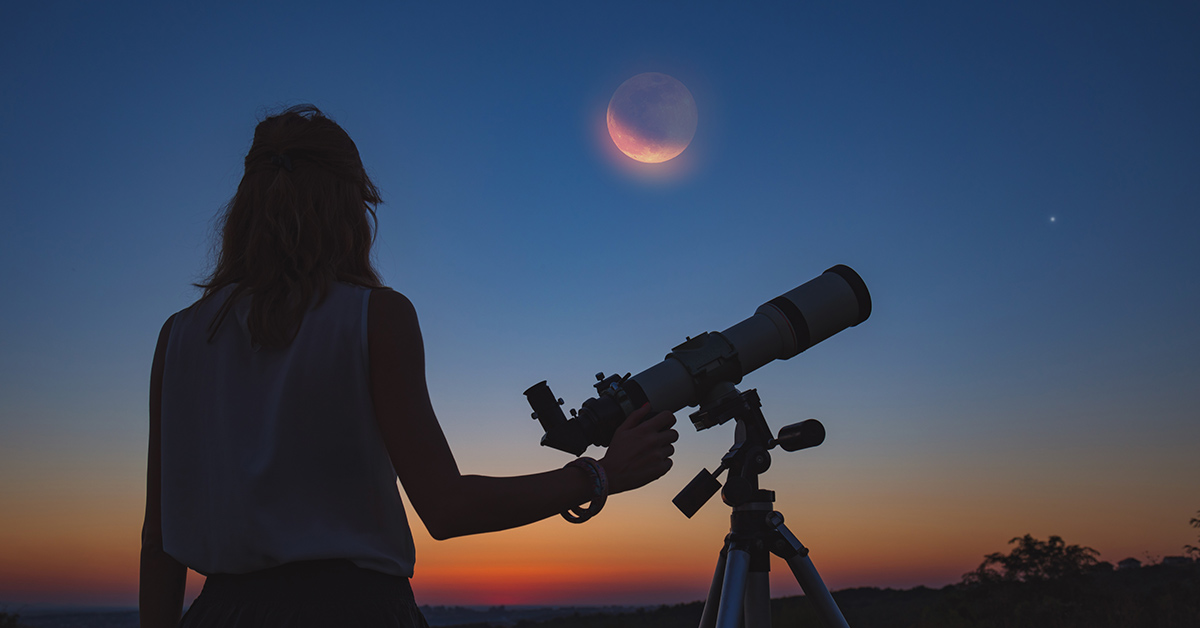There’s something incredibly inspiring about the night sky. If you’ve ever gotten the chance to view it without any light pollution around you, it’s a totally different experience than viewing it in a city. Suddenly, billions of stars appear bright against the black sky. It’s striking how large the world is and how many mysteries it contains. There’s no wonder why many people devote hours to examining the night sky and its patterns and anomalies. However, even those who know next to nothing about stargazing and outer space could catch this stunning, once-a-year view: Earthshine.
What is Earthshine?
Sometimes when the moon is only a crescent, you could still see the dark side of the moon. Nowadays, that phenomenon is called earthshine. In the past, it was called “the new Moon in the old Moon’s arms,” “ashen glow,” or the “Da Vinci glow.” The latter was because Leonardo da Vinci was the first one in recorded history who explained how this incredible sight works. [1]
This usually occurs at twilight when the section of the moon unlit by the sun looks like it’s glowing on its own. Actually, the glow comes from the sunlight reflecting from Earth back onto the moon.
This reflecting glow isn’t a rare occurrence. About 38% of the sunlight that lights up Earth reverts back into outer space. Some of this light hits the moon, which is not as reflective as Earth and creates a mystical-looking glow on the dark side of the lunar surface.
Fun fact: If the sun would suddenly become dark, the crescent part of the moon will go dark with it. However, the earthshine will illuminate the moon for three more seconds. This is because, in other words, earthshine is sunlight that “took a detour” to the moon. [2]
Moreover, when the moon is at its thinnest of crescents, the earthshine appears the brightest. This is because of the natural light cycles. When the moon looks thinnest from Earth, Earth looks full from the moon’s perspective. Similarly, when the moon is full, the Earth will look dark or in a crescent from space.
See Earthshine in April and May 2021
Earthshine looks the most prominent after a new moon when there’s only a sliver of sunlit moon in the night sky. That is when the moon will receive the most amount of reflection from the sunlit planet.
The best time of day to see it is in the evening, just after the sunsets. Alternatively, you could view it just before dawn. Late winter and early springs are the best times of year to witness this incredible sight.
These seasons are ideal because the Northern Hemisphere is tilted toward the sun. In the higher latitudes, snow and ice are still on the ground, reflecting even more light from the earth. And during the winter, the Arctic region receives minimal sunlight and reflects much less. Early spring is the perfect time to take advantage of the increased light while still cold enough for snow and ice. [3]
In 2021, earthshine will be clearest a few days before and after the new moons in April and May. That would be around the 11th and 12th day in each of those months. Look at the moon around twilight, and bring your telescope and binoculars. If you don’t have a pair, don’t worry. You can see earthshine easily with the naked eye. [4]
Astronomers Use the Moon to Help Search for Alien Life
Yes, really. Astronomers use earthshine as a tool to search for alien life in outer space
“With earthshine observations, what we do is use the moon as a giant mirror,” said study lead author Michael Sterzik, deputy director of the European Southern Observatory’s La Silla Paranal Observatory. “The sun illuminates the Earth, and that light is reflected onto the moon — but the side of the moon that we usually see as the dark portion.”
Their technique polarizes the moonlight to take detailed measurements of the biosignatures on Earth. Of course, we know that life exists on our planet, but this method could be invaluable when searching for otherworldly life. So far, this technique is being applied to giant exoplanets to examine their atmospheres — and search for aliens.
“Finding life outside the solar system depends on two things: whether this life exists in the first place, and having the technical capability to detect it,” study co-author Enric Palle of the Instituto de Astrofisica de Canarias in Tenerife, Spain, said in a statement. “This work is an important step towards reaching that capability.” [5]
Keep Reading: The missing continent it took 375 years to find
Sources
- “What Is Earthshine?” Time and Date. Aparna Kher.
- “What is Earthshine?” The Old Farmer’s Almanac. Bob Berman. November 11, 2020
- “Earthshine.” Earth Observatory.
- “Earthshine Is Coming—How to See the Dark Part of the Crescent Moon in Spring 2021.” Mental Floss. Michele Debczak. March 5, 2021
- “Moon’s Reflected ‘Earthshine’ May Aid Search for Alien Life.” Space. Denise Chow. February 29, 2012

